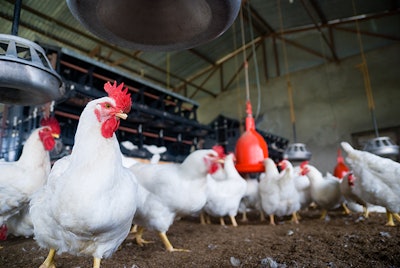
New research published in the Journal of Environmental Quality has revealed that microbes found in recycled poultry litter could improve bird health by preventing the growth of pathogens like Salmonella.
The study also explored how moisture, ammonia levels and other litter characteristics can affect the mix of bacteria, fungi and viruses found in litter, also known as the litter microbiome.
“The major challenge is manipulating litter itself to determine pathogen concentration. It is recommended that litter should be pathogen-free, however the designation of litter status is ultimately dependent on the accuracy of the method used including the limit of detection and quantification of the method,” explained Adelumola Oladeinde, a co-author of the recent study and a researcher at the United States Department of Agriculture’s (USDA) National Poultry Research Center.
Litter plays an important role in the lives of chickens. Chicks will often peck at litter before they begin to eat from feeding troughs, a fact that has led some scientists to call the bacteria in litter the “first settlers” in the guts of the chicks.
Researchers collected samples of reused poultry litter from three different broiler flocks at the University of Georgia Poultry Research Farm. They then measured the characteristics of each sample in the lab before adding Salmonella to each sample.
Notably, some of the samples developed microbes that reduced the growth of Salmonella. One of these was the Nocardiopsis bacteria, which is known to produce antibiotics and toxins.
“I am hoping the industry can pay more attention to the litter they use from grow-out to grow-out. That includes keeping a detailed history of their litter and the bird performance of the flock raised on them from flock to flock. Simple details on the age of the litter used for a particular flock will be invaluable to the farmer, the producer and we scientists,” Oladeine said.
Like what you just read? Sign up now for free to receive the Poultry Future Newsletter.


















